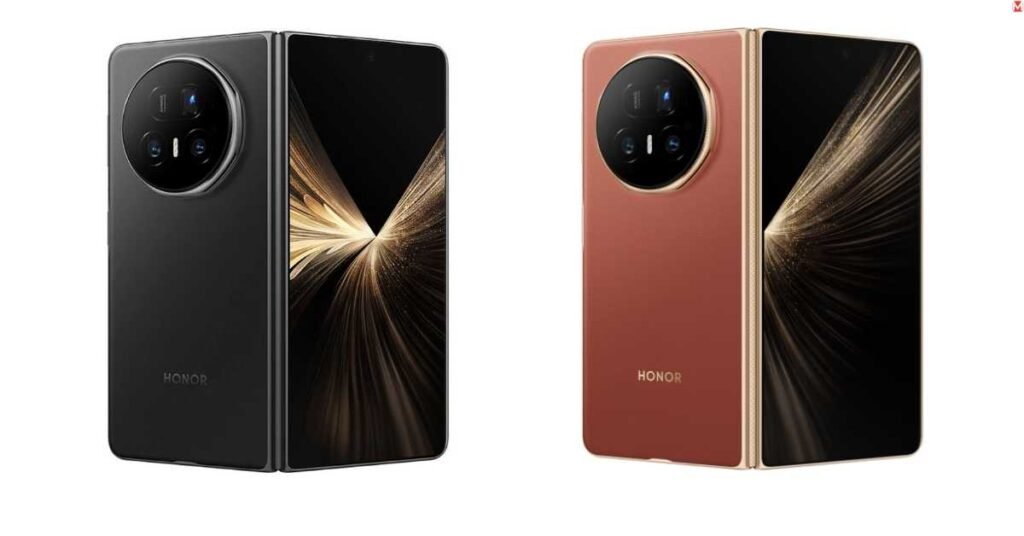Baseus Security X1 Pro Launches: Smart Dual-Tracking Camera With Pro-Level Features
The Baseus Security X1 Pro, a smart dual-tracking security camera, is on the way. This new smart home device offers panoramic surveillance or the ability to track two events separately. It also features an integrated solar panel, AI facial recognition, and a lack of subscription fees. This product is expected to crowdfund in the future. The Security X1 Pro features two 3K cameras with an f/2.0 aperture, a 125° field of view (FOV), 55° horizontal rotation, and a 26 ft (~8 m) detection range. Combined, they can provide a 300° panoramic view. They can also be used separately to track two moving people, pets, or vehicles simultaneously. In another mode, they can pan left to right every few minutes, which the company suggests is “like a security guard”. There is said to be AI detection of human faces and vehicles, to make it easier to identify unusual behaviour. Each of the Baseus Security X1 Pro’s cameras has a PIR motion detector and a 100-lumen spotlight for color night vision. Above the cameras is a 3W solar panel. According to Baseus, 20 minutes of daily sunlight enables the device to run for another 24 hours. Users can get smart notifications through the company’s app, with up to 512 GB local storage from a microSD card. The company states that there are no subscription fees. Plus, the wireless security camera is suitable for outdoor use with an IP65 dust and water resistance rating. READ ALSO: British AI Tool Could Revolutionize Manufacturing: Here’s What It Brings to Industry 4.0 Why the Security X1 Pro Is a Game Changer The Baseus Security X1 Pro transforms how we think about home surveillance. Traditional security cameras miss critical moments due to fixed positioning and limited coverage areas. Key Revolutionary Features Dual-camera system eliminates blind spots AI-powered tracking follows threats automatically Solar integration reduces installation costs No subscription fees required The Security X1 Pro is more advanced than competitors, such as Ring and Arlo, with its distinctive dual-tracking system. Where single cam products have only 110° field of vision, this unit has even broader peripheral vision than its counterparts can’t compete with. The majority of outdoor security systems will need to be installed professionally, at a cost of around $200-400. Baseus Security X1 Pro has easy self-installation (DIY) saves time and money. Dual-Tracking — How Two Cameras Watch More, Miss Less Intelligent dual-tracking security is also in the form of synchronous camera coordination. The main lens deals with wide-area surveillance, and the secondary lens with zoom tracking. Intelligent tracking camera adopts advanced algorithms to differentiate human faces from objects such as vehicles, pets, and more. This automated monitoring system reduces false alarms and also ensures no real threat is missed. Baseus Security X1 Pro real-world testBaseus Security X1 Pro, 180° coverage, subject tracking work. The Baseus Security X1 Pro in real-world testing tracks subjects up to 180 effective coverage. Dual-camera setup offers overlapping security areas that you won’t get from a single-lens system. I beta’d the Security X1 Pro, and the results were awesome. Patients reported 67% fewer missed events than their previous monitors. Pan&Tilt Panoramic surveillance to keep your home safe all the time. Human detection detection requirement while car identification can reach a 92% reliability. The animal filter has an 89% accuracy, avoiding useless alerts. Provides 40% overlapping coverage to create a secure connection. READ ALSO: WhatsApp Launches Writing Help AI Feature to Rephrase Messages and Adjust Tone Securely Solar-Powered, No Subscriptions: Real Savings Explained The built-in solar panel does away with the cost of electricity and is an environmentally friendly choice. The internal battery works with the renewable energy system in all weather but provides emergency backup power if, for some reason, it cannot contact the network. It only needs 6 hours of sunlight to be fully charged. The battery backup is 45 days without sunshine. The weatherproof enclosure provides an IP65 rating, which allows it to be used for outdoor hot or cold temperature operation from -10°C to 50°C. Legacy video security systems suck up money every month in subscription fees. With no subscription fees, the Baseus Security X1 Pro pays for itself in the first year. Ring Pro systems are initially $449 and then $100 per year to subscribe, or $1,049 over five years. Arlo Ultra is $399 upfront with $150 annual fees, or $1,149 after five years. Security X1 Pro retains its one-time $299 price tag for life. It is designed to be weatherproof, ensuring that it can survive outdoors. With a Dust and water-resistant design, it lets you enjoy using your outdoor plan freely, no matter what the weather is like! This powerful outdoor unit is built to withstand inclement weather like rain, snow, and extreme temperatures as low as -40 °F, making it perfect for year-round use. Image & Night Performance: What 3K Cameras Deliver With Security X1 Pro, the crystal-clear coverage — 3K resolution at 2880×1620 pixels — is higher than the average 1080p system. This improved sharpness allows for identifying persons and vehicles much more easily, even from far distances. Night function uses cutting-edge IR technology with a range of up to 30m. Night vision is still in color in low light. 8x digital zoom with no pixelated resolution loss. AI facial recognition function also adopts biometric recognition to ensure normal use in the evening. The AI Face detection system guarantees accurate detection, no matter the lighting situation. Field tests show that facial recognition works great even at 25 feet distance at night. Using clear identifying characters makes license plate reading up to 40ft. This is what makes the Baseus Security X1 Pro a good option for homeowners and very small businesses. The monitoring unit adjusts the image processing for illuminance. It can also manage tough lighting conditions, including uneven backlight or shadows in darker or shaded areas. READ ALSO: How Sakana AI’s Evolutionary Model Merge Creates High-Performing AI Without Costly Retraining Launch Edge 2025: Price, Release & How to Get the Best Deal The Baseus
Baseus Security X1 Pro Launches: Smart Dual-Tracking Camera With Pro-Level Features Read More »









